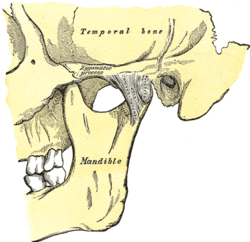The temporomandibular joint, which we commonly refer to the TMJ is the joint that connects your lower jaw to the skull. This joint makes it possible to close and open your mouth. Sometimes, this joint can get damaged or injured and can lead to mild or debilitating localized pain. This condition is called the TMJ syndrome.

Some of the common symptoms of TMJ syndrome include locking of the jaw joint, headaches, grating sounds, looseness of the back teeth and uncontrollable tongue movements. TMJ can be stressful.
That’s why we have put together 4 useful tips to control and treat TMJ symptoms at home:
- Do Jaw Exercises To Relax Your Jaw
There are several TMJ exercises that can help relieve the pain. According to a study published by the Journal of Dental Research, these TMJ exercises can help patients increase the mouth opening range and enable you to sleep pain-free.
You can start by placing your tongue on the upper part of your mouth and one finger right in front of your ear. Then, place your pointer finger on your chin. Try dropping your jaw halfway and closing it again. Repeat this exercise at least 6 times every day. You will feel a bit of resistance but no pain. These exercises are safe and effective and can help relieve the pain. If you experience any challenges, kindly ask your doctor or dentist for guidance.
- Eat Soft Foods
Eating soft foods can significantly help in reducing the amount of stress your TMJ joint suffers when chewing and this can speed up the healing process. Change your diet and incorporate soft foods such as yogurt, soup, fish and mashed potatoes.
Eat plenty of fruits and vegetables. However, ensure that you do not eat them raw. Cook your food to a soft texture. Cut your fruits into very small pieces to avoid pain. Avoid chewing gum and other chewy foods that can overwork your jaw.
- Try Warm And Cold Compresses
Heat and ice compresses over the jaw are an effective way to reduce TMJ pain and relax the muscles. Not only are these packs inexpensive, but they are also very easy to use and store in your house. For this process, you will need a towel and a hot water bottle.
Warm the wet towel in the microwave for about one minute. Wrap it around the hot water bottle and place it on your TMJ jaw. For the cold compress, you can wrap ice in a thin towel. Exercise caution to avoid burning yourself.
- Essential Oils Can Help Reduce Inflammation
Essential oils are one of the best and most preferred homeopathic treatments for TMJ pain. These oils contain anti-fungal and antiseptic properties and can relieve pain without causing side effects. Some of the oils you should definitely try are; rose and tea tree oils, lavender essential oil and peppermint oil. Ensure that you buy natural oil to avoid irritating your skin.
Conclusion
So these were the 4 tips for treating TMJ symptoms at home. Need to visit a local TMJ specialist for your orofacial pain? You can request an appointment at the Restore TMJ and sleep therapy center for a comprehensive treatment approach.





Comments are off this post!